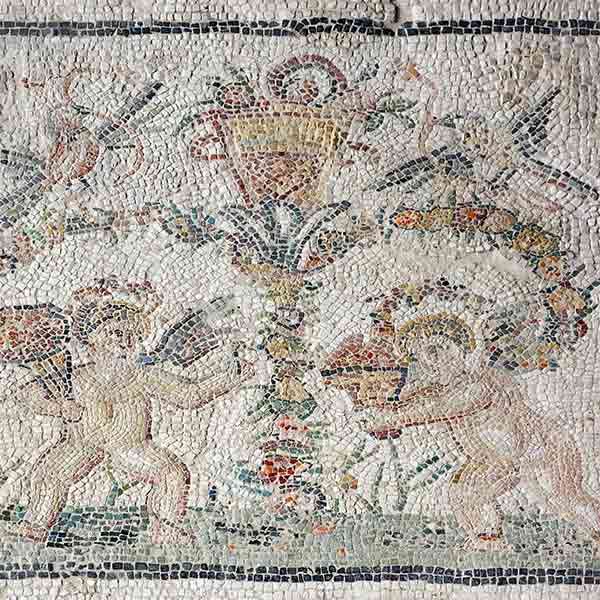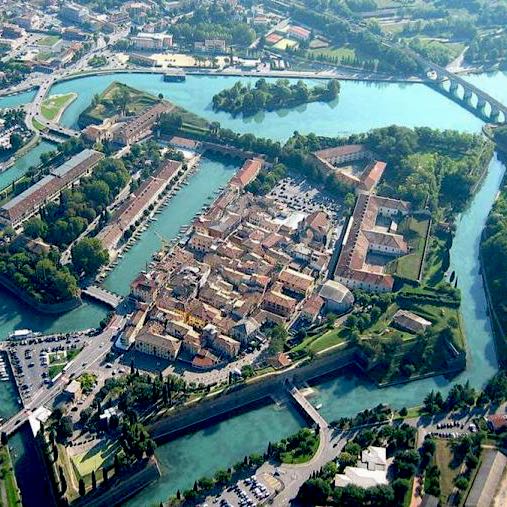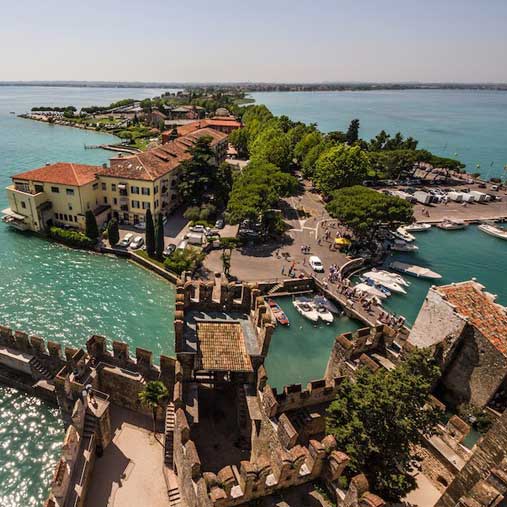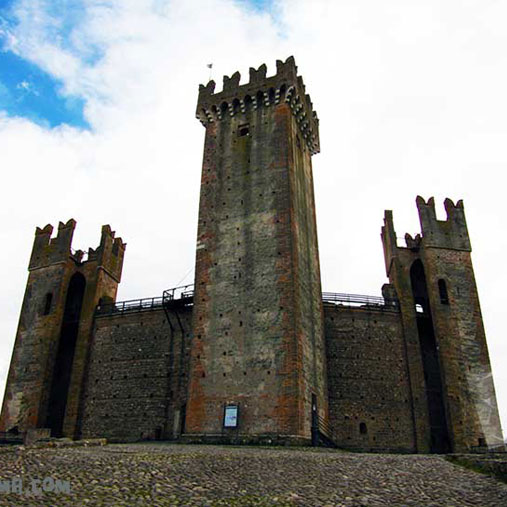Lugana Wine
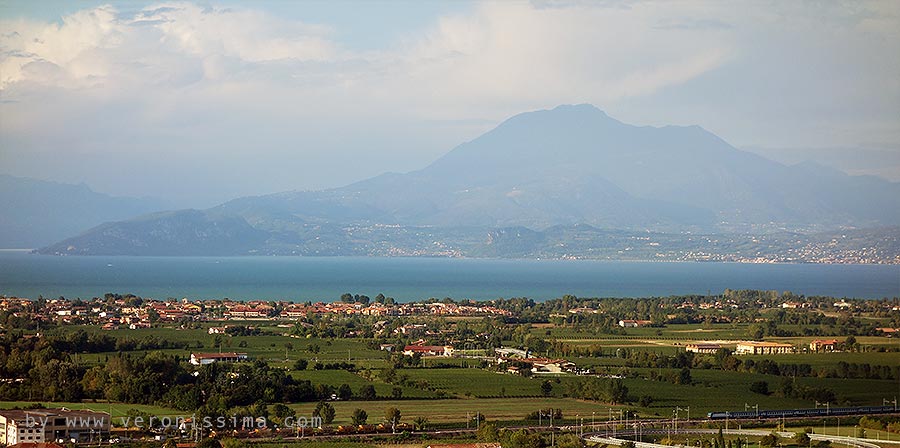
Lugana wine is a very popular Italian DOC white wine. The production area goes from the southern coast of Lake Garda to the morainic hills, halfway between the province of Verona and the province of Brescia. We offer tours, tastings, visits to Lugana's wineries.
Info & Lugana wine tours
+39 333 2199 645 info@veronissima.com P.I. 03616420232 C.F. CPPMHL74L13L781C
Lugana is a delicate wine on the nose, but rich in minerality on the palate with exceptional ageing qualities for a white wine. A visit to the territory of Lugana will let you discover history, culture, natural beauty of places like Sirmione, Desenzano, Peschiera, Valeggio sul Mincio, Borghetto, the Morainic hills.
The Territory
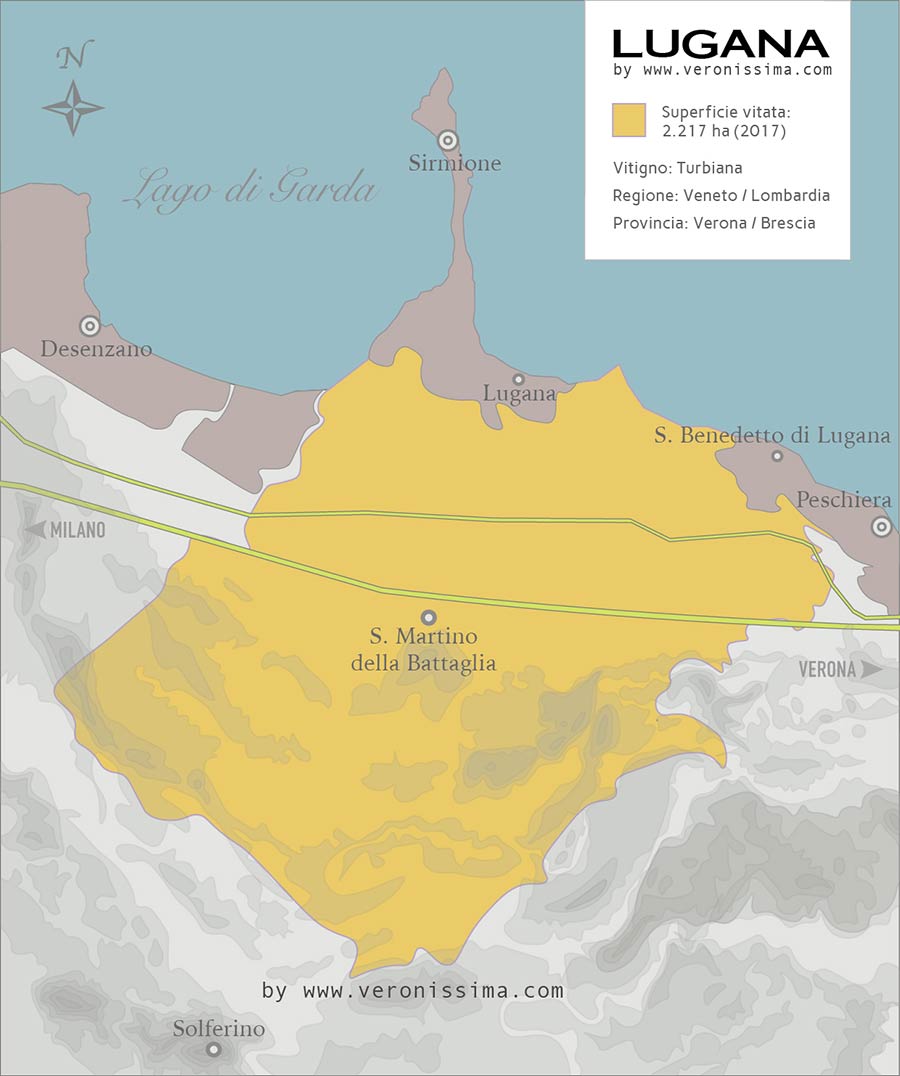
The wine production area of Lugana extends from the southern coast of Lake Garda to the morainic hills, the gentle hills all around. They were formed during the glaciations, with the constant accumulation of debris by the immense glacier that covered the valley, which then turned into Lake Garda. We are between Lombardy and Veneto, between the provinces of Verona and Brescia, close to the basin of the river Mincio, emissary of Lake Garda.
How to get to Lugana
Reaching Lugana is very easy. The area is crossed by the main highways and railways of northern Italy. On the A4 Milan-Venice motorway, exit at the Sirmione tollgate and you will already be in the heart of Lugana. The Peschiera and Desenzano tollgates are at the east and west end of the production area. By train, on the Turin-Trieste line you can get off at Peschiera, Sirmione and Desenzano stations. From there, a maximum of 10' drive will take you to the Lugana cellars.
Clay
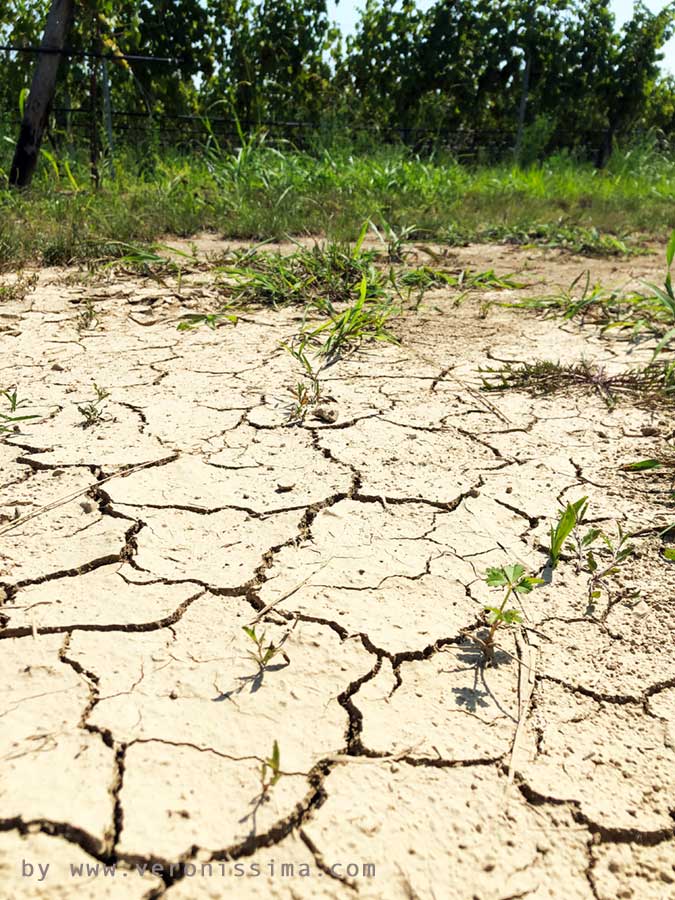
The soil in which Lugana vines grow is rich in clay. In some vineyards it can reach 50% of the soil composition. The winemakers of Lugana know well how demanding it is to work it when it is dry and hard as stone, or wet and muddy as clay. But they also know how much clay, with the wealth of minerals dissolved in it, is crucial to the characteristics of the wine.
The Monks and the Reclamation
In the past it was a marshy area where the lake expanded and withdrew according to climate and weather changes. The Benedictine monks settled here in the early Middle Ages and carried out the reclamation.
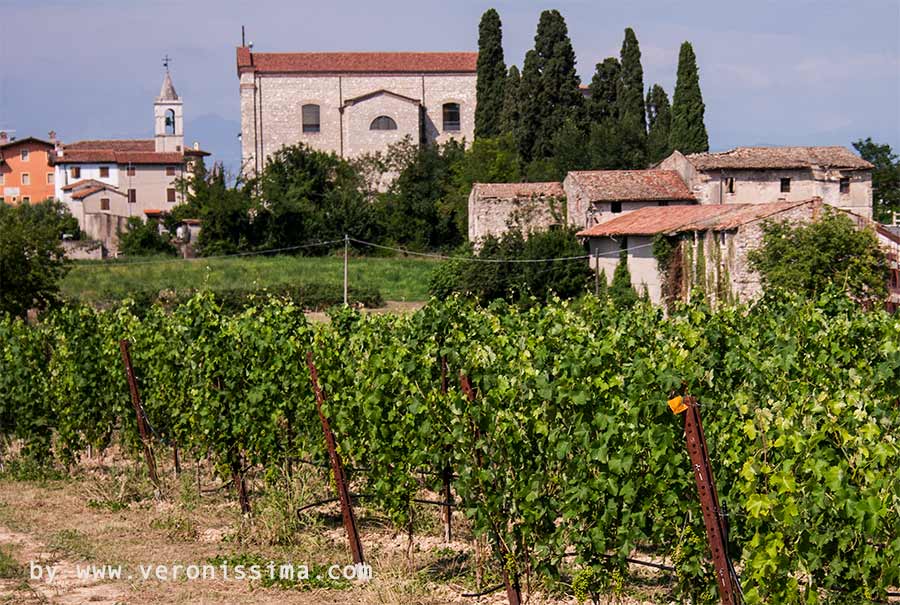
The presence of the monastery is remembered by the church of San Benedetto di Lugana and the village of the same name.
The monks modelled the fields higher in the centre and sloping down towards the sides. With this shape water did not stagnate and ran to the edges where they made drainage channels. You can still see this conformation in some vineyards of Lugana. Where there were priests and monks there were also vineyards. Wine was indispensable for religious services and unfailing on the tables of the monasteries.
Ancient Winemaking
In the past the vine was only one of the many crops in this area, and probably not even the main one. However, its presence is certainly very ancient. In the whole area there were many Roman settlements such as Peschiera, Desenzano and Sirmione. In some of these places there are famous archaeological finds such as the Grotte di Catullo and the Roman villa of Desenzano with their splendid mosaics. For the Romans too, wine was indispensable. Wherever there was a settlement of theirs, there were vineyards and cellars.
A Limited Area
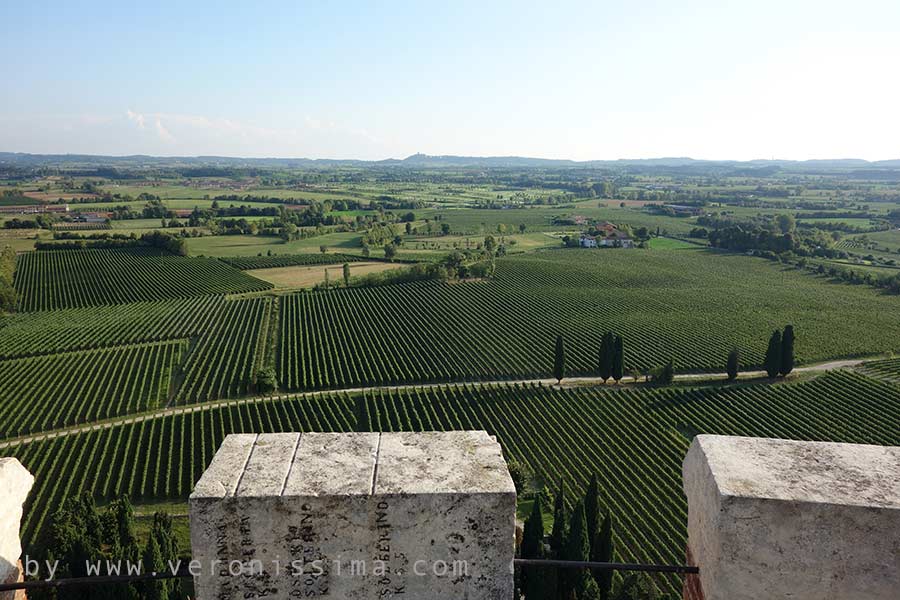
The territory of Lugana is flat, not like other top wine-growing areas that are usually in the hills. The mineral composition of the soil and the microclimate of Lake Garda create ideal conditions for the growth of quality grapes. This is the reason why it is not possible to extend the production surface as producers' associations usually do with successful DOC areas. The hills of the morainic amphitheater that surrounds Lake Garda to the south are made of gravel and stone, which has nothing to do with the clay of Lugana. To the north is the lake.
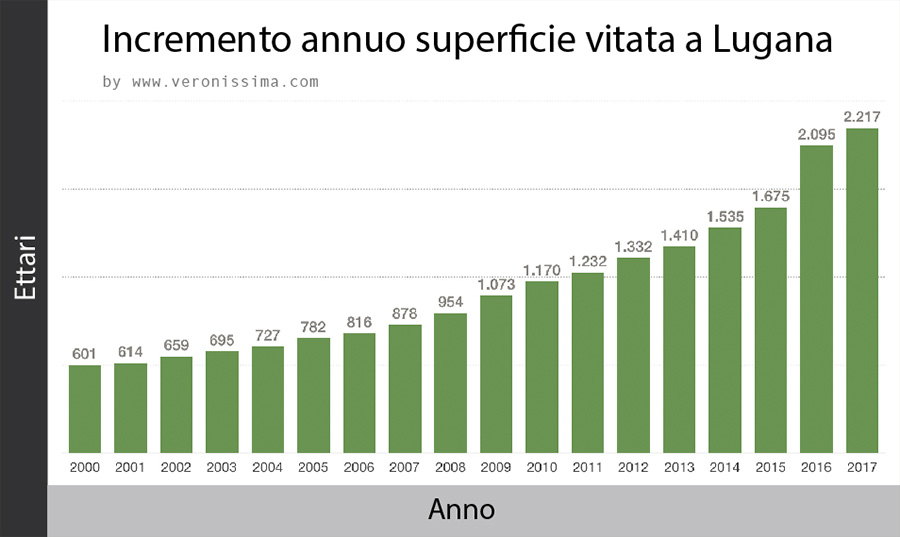
In 20 years, the vineyard suface of Lugana has grown by 300%! There is less and less space for a further increase in vineyards. The vines have to contend for the land with the holiday homes of tourists, the A4 motorway, the Milan-Venice railway line and the high speed train project that risks passing right in the middle of the cultivated fields. All this while Lugana is at the height of its success. Wine enthusiasts have certainly noticed the increase in the price of bottles in recent years.
Lugana Grape Varietal
After the soil, the other key success factor of a wine is obviously the vine.
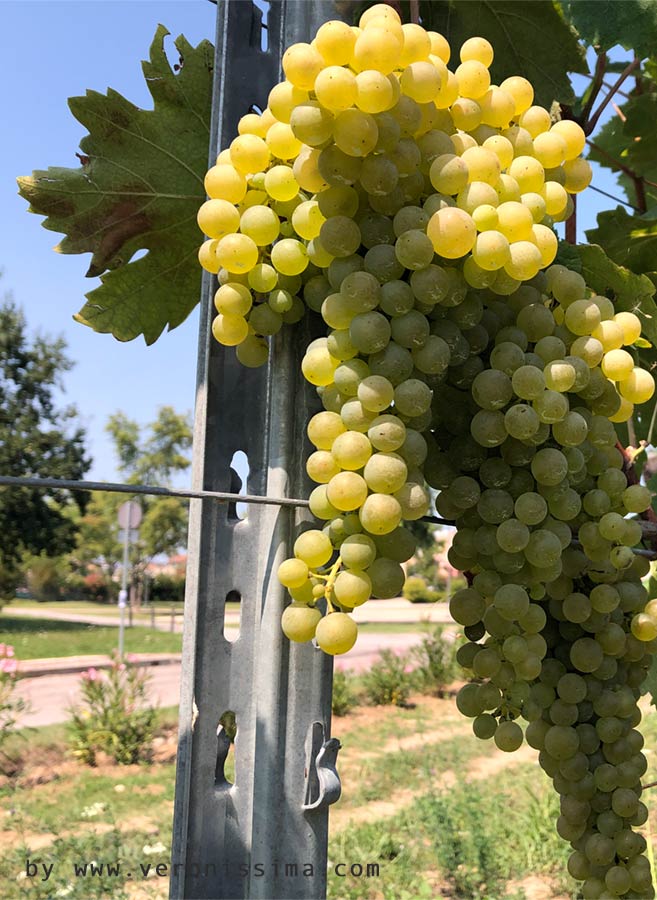
Trebbiano di Soave,
Trebbiano di Lugana,
Trebbiano Veronese,
Turbiana,
For years, there has been total confusion as to what the name of
the vine was, and whether it was the same variety with different
names, perhaps variants of the same strain, or whether they were
totally different types.
There was so much confusion, even among experts, that some winegrowers in Lugana bought whole lots of vines of the wrong variety. A few years ago, they began to apply genetic analysis to vines. It gradually clarified and put some order between hundreds of grape varieties grown in Italy and thousands of names, often local dialect variants. The results often reserved surprises. Grape varieties that they believed to be the same one with different names turned out to be totally different one. On the other hand, grapes produced in different regions with different names turned out to be in fact the same thing.
The sequencing of Turbiana's DNA has revealed that it is in fact... Verdicchio.
So what everybody believed to be an indigenous grape in its own right, is actually a widespread variety in central Italy, particularly in the Marche region. It ended up who knows how and when in the Lugana area where it found an ideal environment to become a great white wine. In the last few years autochthonous grapes have become a way to promote tradition and autenticity of wine production areas. Wine makers even rediscovered almost forgotten types. Knowing that Turbiana was a fairly common grape variety also elsewhere disappointed many Lugana producers and enthusiasts. However, the adaptation of Verdicchio to this territory, with its soil, climate, winemaking techniques, has made it a substantially indigenous grape variety. And we will continue to call it Turbiana anyway.
Small Productions
As we have seen, the territory of Lugana is not very wide, and is fragmented between roads, agglomerates of houses, morainic hills. That is why there are not particularly large estates, and wineries producing millions of bottles as in other production areas. The land is rather fragmented and there are many small family-run wineries in Lugana.
The Characteristics of Lugana Wine
Lugana wine has a rather delicate nose with floral and almond notes. With few years of aging in bottle they intensify, becoming more complex with notes of ripe apple, citrus, tropical fruits. The real distinctive note of Lugana, however, is its lively acidity and strong minerality on the palate. They give it a clean mouthfeel and make it an ideal accompaniment to food, even for dishes you would not dare to pair with a white wine.
Young Lugana
A few years young, Lugana is a fresh and pleasant wine. Straw yellow in colour with greenish hues, it is ideal as an aperitif to accompany appetizersof cold cuts and fresh, medium-matured cheeses. For the meal it is perfect with first courses such as risotto, stuffed pasta and ideal with fish and shellfish.
Aged Lugana
What makes it really special, however, is the rare ability for a white wine, to age in the bottle, turning into a complex and structured wine. Good vintages of quality Lugana can easily exceed ten years in bottle, preserving vitality and freshness. The color in these cases transforms into a bright golden yellow. The aromas become more intense and the palate, while maintaining a balanced acidity, becomes creamy and enveloping, with an almost salty flavor and notes of flint, almonds, toasted hazelnuts, balsamic hints.
Sparkling and Late Harvest
In recent years wine makers have been experimenting with sparkling wines, both classic and charmat method. There is also a small production of late harvest versions. They are slightly sweet but very rich in scents and aromas.
Close By
The area is rich in historical and tourist attractions. Sirmione, Peschiera, Desenzano, are all pleasant places overlooking Lake Garda, with Roman remains, characteristic harbours from which to embark for water excursions, castles and fortresses, shops and characteristic restaurants.
You may be interested
Then there is Valeggio sul Mincio with the Scala family castle, the Sigurtà park, the Visconti dam bridge, and Borghetto sul Mincio, an extraordinary village made up of ancient water mills. The area is famous for the Valeggio tortellini called "knot of love", which are a perfect match for a good bottle of Lugana.
+39 333 2199 645
info@veronissima.com

 IT
IT 日本
日本 DE
DE FR
FR 中文
中文 ES
ES